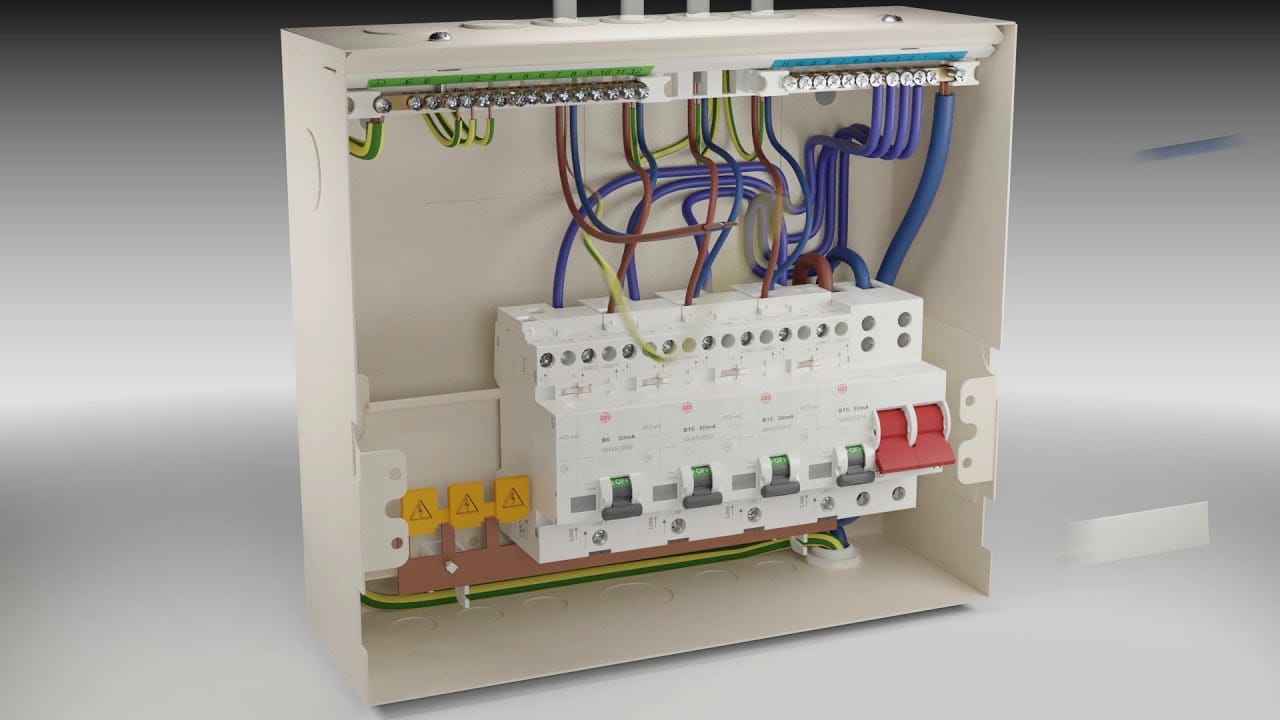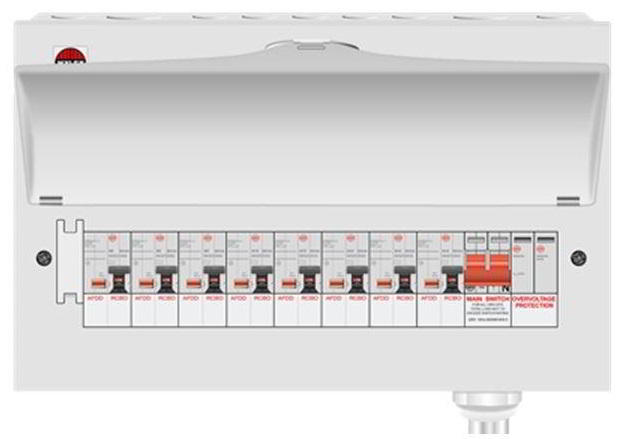Arc Fault Detection Devices and 18th Edition Regulations
Simon Rowlinson of Wylex looks at the 18th Edition regulations to analyse whether Arc Fault Detection Devices (AFDDs), although defined as a ‘recommended’, are actually ‘mandatory’ in certain situations.
You may or may not know that the latest wiring regulations require protection against arcing? The 13th chapter deals with the fundamental principles and the protection and safety of people property and livestock, Chapter 42 deals with protecting against thermal effects.
From Chapter 13, regulation 13.1 (vii) says that in electrical installations there may be a risk of injury as a result of arcing or burning, and regulation 131.3.1 requires the electrical installation be arranged so that the chance of ignition of any flammable materials due to the high temperature or electric arc is kept to a minimum.
We are also required to make sure that electrical equipment doesn’t present a fire hazard to nearby material and to protect people against the harmful effects of combustion, ignition or degradation of materials.

‘Danger’ Definition
The definition of danger in the 18th Edition includes the following: “risk of injury to persons (and livestock) from fire, electric shock, burns, arcing and explosion arising from the use of electrical energy”. So it is understandable that the above requirements are included.
Chapter 42 (section 421) also includes regulations that deal exactly with protection against fires caused by electrical equipment. A while ago the section was changed to make it compulsory to use non-combustible consumer unit enclosures in all domestic/household premises, which reinforces the scale and purpose of this section.
Section 421 states that protection is required against the harmful effects of heat or thermal radiation that may be developed by electrical equipment. Persons, livestock and property must be protected against harmful effects of heat or fire which may be generated or propagated in electrical installations.
Such harmful effects may be caused by insulation faults or arcs, sparks and high-temperature particles, overcurrent, failure of electrical equipment or heat accumulation, heat radiation, hot components or equipment. This is covered in regulation 421.1.1
Additional Protection
Section 421 also recommends the use of Arc Fault Detection Devices to provide additional protection against fires caused by arc faults.
The subsequent sections of chapter 42 (section 422) deal with specific locations and circumstances that require further considerations. This is in addition to the requirements of section 421 which also apply. Section 422 relates to precautions where a particular risk of fire exists e.g. locations with a risk of fire due to the materials & processes used, buildings with combustible construction materials or fire propagating structures like high rise buildings etc
Regulation 422.1.2, for example, requires electrical equipment to be selected and installed so that its normal temperature rise and foreseeable temperature rise caused by a fault can’t cause a fire. This can be achieved by the construction of the equipment or by extra protective measures applied during installation.
What causes ‘Arc’ faults?
Arc faults can occur from damaged insulation, loose terminations, or compressed cables, poorly made connections, frayed conductors, and deterioration of insulation materials that age over time. Faults like these can lead to overheating and possibly ignition of the insulation of the cable and the combustion of surrounding flammable materials.
Even though there are requirements within the regulations to ensure that the installation is designed so that the wiring systems are protected against impact, abrasion, tension, and compression (Chapter 52) and requirements for every connection to provide durable electrical continuity and adequate mechanical strength, electrically ignited fires continue to occur.
There’s also Chapter 53 which considers the use of devices for the protection against the risk of fire. Regulation 532.2 states that RCDs with a rated residual operating current of not exceeding 300mA shall be used and that RCDs shall be installed at the origin of each circuit to be protected.
But, RCDs are designed to not operate with fault currents below 50% of their rated current. So a 300mA RCD wouldn’t disconnect a 150mA earth leakage/arc fault. Also, RCDs are unable to detect serial arc faults that occur with loose terminations or damaged (reduced) conductors, while MCBs cannot detect arc faults because the magnitude of the fault current is too low to operate the device.
No surprise then that within the same section of the regulations there is 532.6 which states that Arc Fault Detection Devices (AFDDs complying with BS EN 62606) where specified shall be installed at the origin of the final circuits to be protected (in AC single phase circuits not exceeding 230V).
Clearly, there are lots of considerations for designers to take into account to ensure a safe reliable installation including providing adequate protection against arc faults.
The use of AFDDs now offers an additional level of protection against fire caused by arc faults in final AC circuits. Government statistics show that there were more than 13,000 fires in England 2016/17 occurring in electrical distribution and other electrical appliances, which suggests considerable room for improvement.
The Arc Fault Detection Device Solution
Wylex manufactures Arc Fault Detection Device solutions ready for you to comply with the 18th Edition of the wiring regulations.
Contact Us:
Contact Electrical Wholesale Ltd is an electrical wholesaler with trade counters in Birmingham, West Midlands and Cannock, Staffordshire. We are electrical suppliers to electricians, electrical contractors and electrical engineers. We have a wide range of products and stock including most of the big named brands.
If you have any questions or would like to know anything about the products that Contact Electrical supply fill out our contact form or get in touch direct:
Email us: sales@cewltd.com or call us on: 0121 359 5387 (Birmingham) or 01543 271 362 (Cannock) | www.cewltd.com

